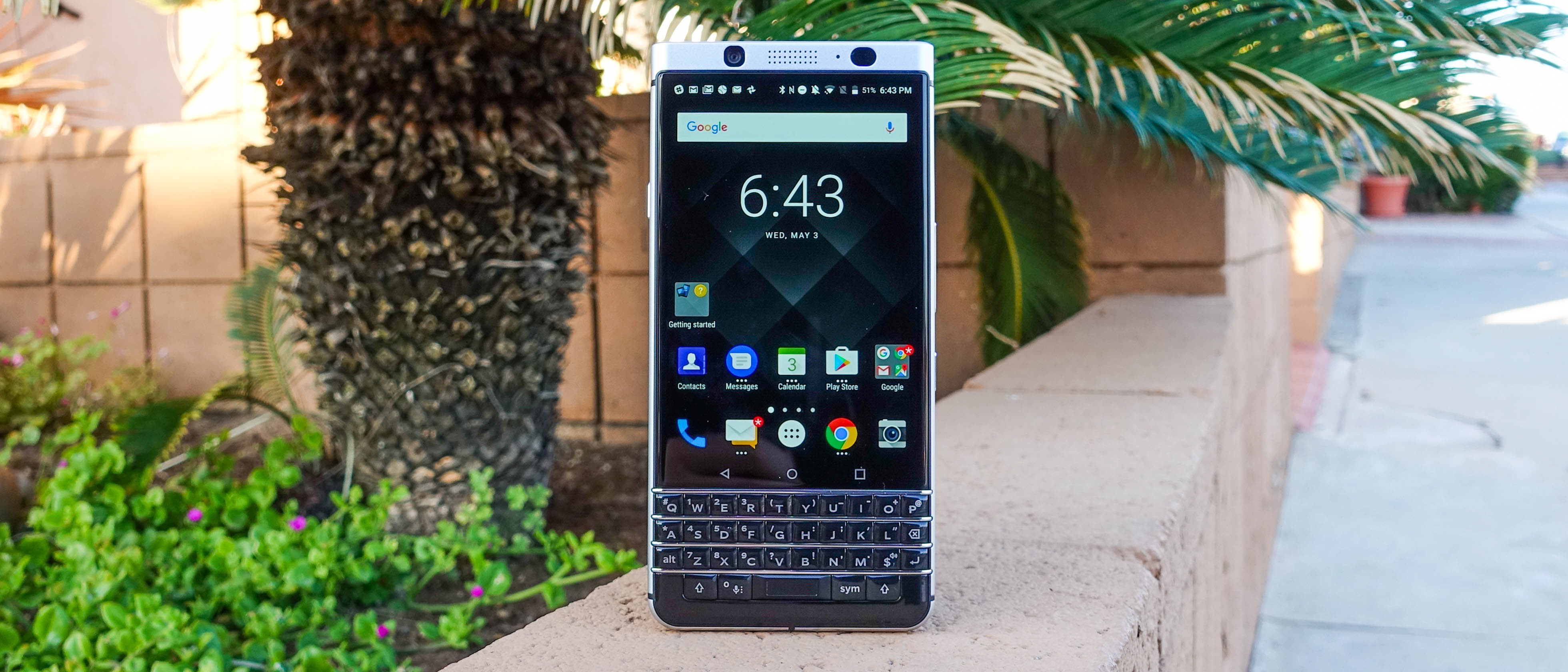TechRadar Verdict
BlackBerry KeyOne is a sophisticated-looking smartphone that resurrects a physical keyboard in the modern Android era. Its tactical QWERTY keyboard offers a dose of nostalgia, while its smart and secure software give businesses some peace of mind. Just know that the mid-range specs will only get you so far and its entertainment capabilities make this BlackBerry feel as if it clocks out at 5pm sharp when it comes to the fun stuff.
Pros
- +
Physical keyboard
- +
Sophisticated high-end design
- +
Smart, secure software
Cons
- -
Not great at entertainment
- -
Mid-range phone chipset
- -
No dual-SIM or dual speaker
Why you can trust TechRadar
Update: BlackBerry KeyOne is now a year old and the follow-up, BlackBerry Key2, is here. But if you're still interested in the KeyOne, it's cheaper and there's a better 'Black Edition' with a tweaked design, more RAM and additonal internal storage.

Move over, Samsung Galaxy S8. The BlackBerry KeyOne is the latest smartphone comeback story of 2017, even if the company behind it is really just China’s TCL Communications.
It’s touted as the most secure Android phone, pre-loaded with smart, enterprise-level mobile software and, at last, delivers an old-school physical keyboard within a modern enough stainless steel and faux-leather design.
For a few pennies more, an all-black model is also available for the discerning executive (dubbed 'Black Edition'), with a little more RAM and internal storage to boot.
This is the reinvented BlackBerry for everyone wholly determined to reclaim a tactile keyboard and BlackBerry Messenger. It works great for typing once you get used to the keys again. We were actually more accurate at typing with it, though we never faster versus using an on-screen keyboard.
‘CrackBerry’ addicts have something to look forward to here. But it’s a workaholic. BlackBerry KeyOne is all business in the front and back, less of a multimedia party anywhere in between.
The screen is bright and colorful, but while its 3:2 aspect ratio is great for viewing emails, it leaves you with unsightly black bars on all 16:9 video. It makes movies look really small. The audio comes out through a single bottom-firing speaker, too. It’s like this phone clocks out at 5pm sharp when it comes to the fun stuff.
It borrows camera specs from other top-tier top phones, with a 12MP sensor right out of the Google Pixel. Photos are good, though the shared specs only go so far: it doesn't have the same backend camera image stabilization software and its front-end camera app is a mess.
BlackBerry KeyOne is clearly an Android phone that has productivity users in mind. It works as an entertainment device, too, but it’s not the best at it. Sure, it doesn’t have the fastest chipset and a fancy new display, yet it’s one of the best phones at helping you manage day-to-day tasks and will last you the entire day with battery life that lasts more than 24 hours.
What it lacks in top-of-the-line internal chip specs it tries to make up for with unique features like sophisticated software and its physical keyboard. It’s a trade-off that makes it slightly cheaper.
Does this new BlackBerry phone have enough of an enterprise advantage to lure you back from your on-screen, makebelieve keyboard? Let’s get down to business and put it to the test.

- £499 (Silver - 3GB RAM, 32GB) or £549 (Black - 4GB RAM, 64GB)
- $549 (Silver - 3GB RAM, 32GB), no date for Black Edition
The BlackBerry KeyOne price is somewhere in between Wall Street and Main Street, costing $549 (£499, AU$729). It’s cheaper than an iPhone 7 or the Samsung Galaxy S8.

In the US, there are two versions: an unlocked edition that’s GSM and CDMA capable across the networks, and a summer-bound CDMA model for Sprint.
In the UK, it was launched early at London's prestigious Selfridges and eventually came to Carphone Warehouse on May 5. More UK retailers and carriers have come on board, including John Lewis and Currys.
For those looking for even more power, the new ‘Black’ Edition is available in certain markets, packing a smart new all-black paint job plus more RAM and double the storage compared to the base model. It's currently retailing for £549 in the UK.

- BlackBerry's signature keys return, spurning the new all-screen trend
- Makes for a more precise, but slow typing experience
- Neat tricks: 52 key shortcuts, trackpad-like movement and suggested word-flicking gestures
The Blackberry KeyOne is all about its physical keyboard in a world dominated by touchscreen iPhones and Androids. It’s the exact opposite of the Galaxy S8 and LG G6 all-screen trend.

BlackBerry’s signature keyboard is a welcomed change if you miss the tactile feedback of a real smartphone keyboard. There are 35-chiclet-style keys, and each one it properly backlit with no need for an on-screen keyboard to hog your display.
It does take several hours of typing to re-learn how use it. At first, it’s problematic. B shares a key with ! and caused us to say “How’s your day goingB” with a quick apologize. “Sorry, mom.”
We found ourselves making fewer typing mistakes going back to a BlackBerry, but overall slower in our characters-per-minute output. We.e were never faster versus typing on an on-screen keyboard, just more accurate and less autocorrect dependent.

There are several twists to make life easier. It has 52 customizable shortcuts, so every long and short press gets you somewhere faster. Hold down on the ‘I’ key while on the home screen and you instantly get to Instagram.
Blackberry KeyOne has three-word suggestions across the bottom of the touchscreen as part of its contextual next word prediction engine. It’s smart, but doesn't have punctuation predictions or, like iOS 10, emoji predictions. That’s too fun for a BlackBerry.
You can, however, select a suggested word without ever lifting your thumbs from the keyboard. Just slide up on the keys and it’ll almost flick the word right onto the screen. It works most of the time and feels faster than tapping one of the on-screen choices.
The entire keyboard also acts as a trackpad, so you can scroll through menus and web pages as you lightly pet the keys. You, again, don’t need to put your fingers on the screen.
Compared to the glory days of full mobile keyboards, it can feel a little cramped, however this is the best hardware keyboard to grace Android in years.

- Two-tone sophisticated look
- Biometric fingerprint scanner is hidden inside the space bar
- Ironically named connivence key is more annoying than it is helpful
- Strangely, no dual-SIM option for international business travelers
The BlackBerry KeyOne has an air of sophistication, even as it blends the old and the new technology.
It looks like a productivity tool carried by the workforce elite, with the Black Edition in particular looking like the love-child of a Thinkpad and a Rolls Royce.

Its screen-and-keyboard combo is outlined in a silver anodized aluminum frame and backed by a black, soft grip textured rear cover. This stylish, two-toned look is has real character, while the darker Black Edition is still more subtle in its premium look.
No, the rubberized back isn’t really leather, but it gives that impression. The aluminum frame is scratch-resistant and stood up to our minor testing abuse. Not everyone has had such luck, with a few people reporting that the screen pops out rather easily with a little bend.
The good news is that this flaw has been addressed as an issue in the manufacturing process by TCL, and a fix was implemented to ensure new handsets rolling off the production line wouldn't suffer the same fate.
The most clever thing about this new BlackBerry design is that it hides the fingerprint sensor inside the small space bar at the bottom of the phone. It’s an odd shape for a biometric scanner.
The good news is that the blended fingerprint sensor works really well here with a near 0% fail rate (assuming your fingers aren't wet). It’s also easy to access on the front and it can wake the phone from a screen-off state.
There's also a custom 'convenience' button we mapped to the camera app, but found it more annoying than helpful due to its easy-to-mispress location. “Oh, the camera is open... again.” The inability of this button to also wake the device from sleep further limits its usefulness day-to-day.
During calls, it functions as a mute button, which we found useful. It’s easy to remember this button exists during active calls, not when you’re first picking up your smartphone from a table. “Again, with the camera opening?!”
For fingers trained to the more common right-side volume rocker then power button layout, it takes a lot of getting used to.
There's no upside to the mono speaker on the bottom frame. It helps no one – on-the-go entertainment seekers and business speakerphone devotees alike.
We’re also surprised the BlackBerry KeyOne doesn’t have a dual nano SIM tray when many unlocked phones out of China now have a second SIM / microSD card tray. This just has the latter, to the chagrin of jet-setting international business travelers.
While the KeyOne Black Edition may be enough to sway finicky executives in the looks department, it does nothing to solve the base design issues of the original, rather the higher price compounds them.
BlackBerry KeyOne Black Edition hands on gallery

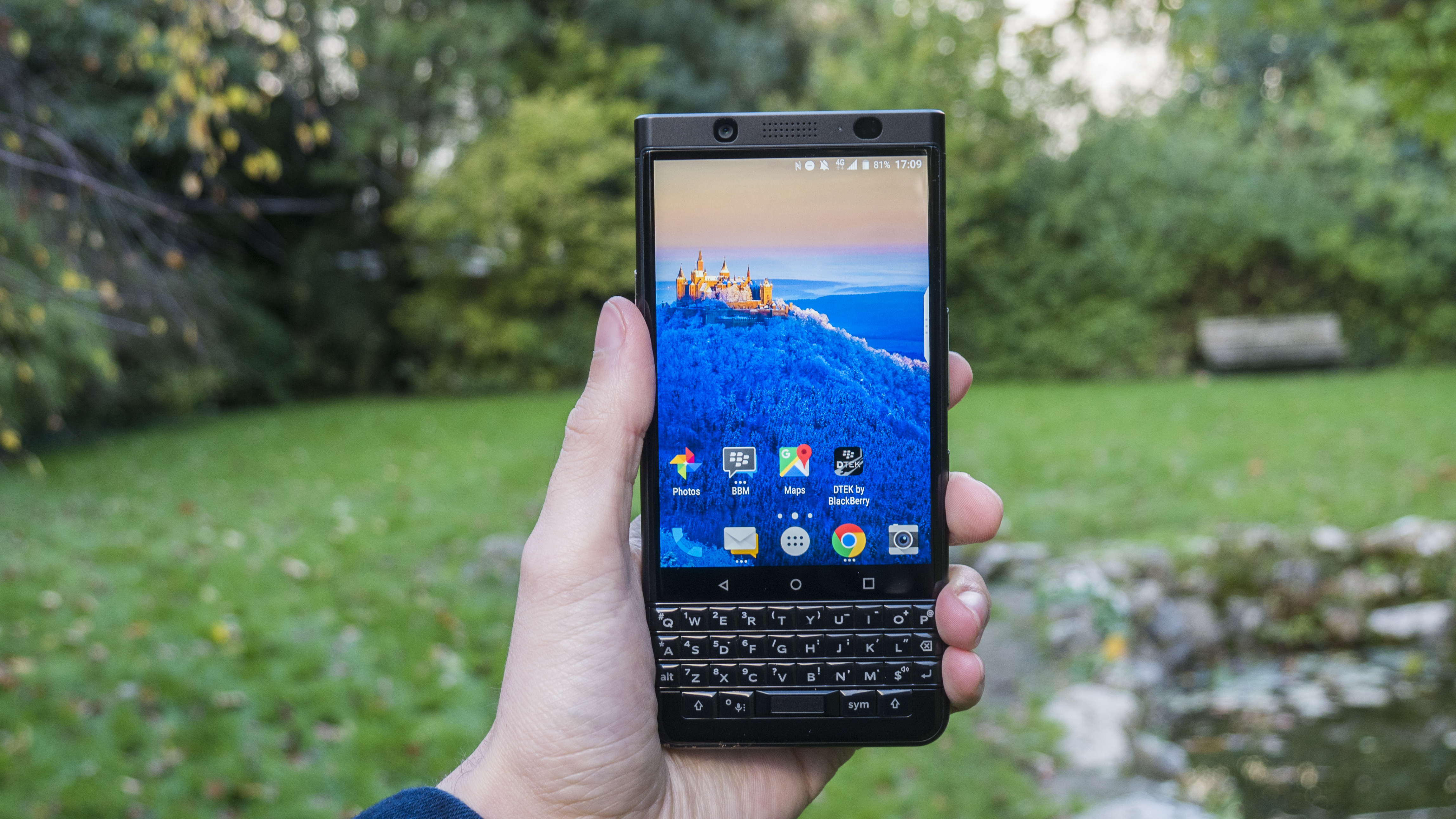
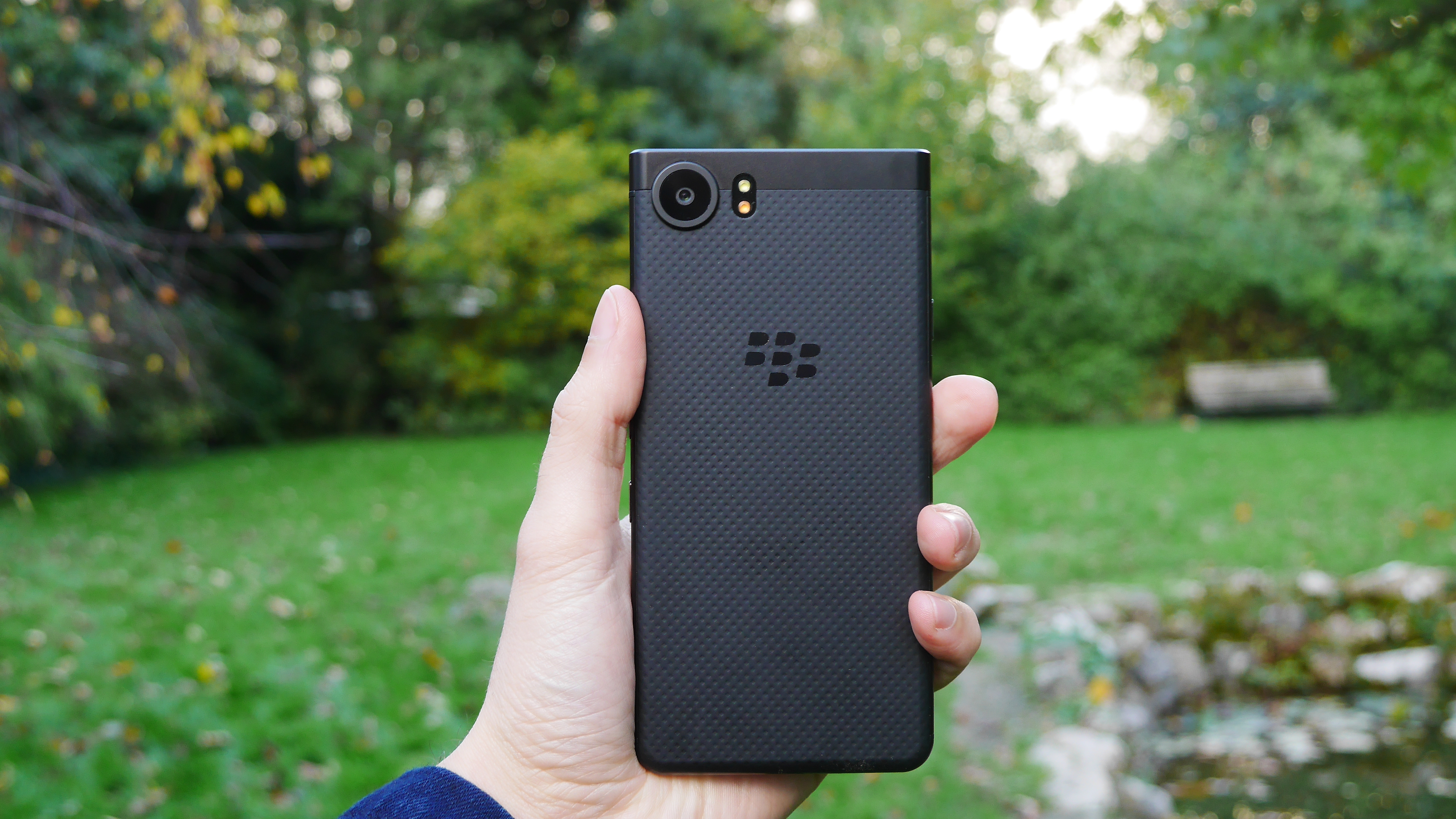
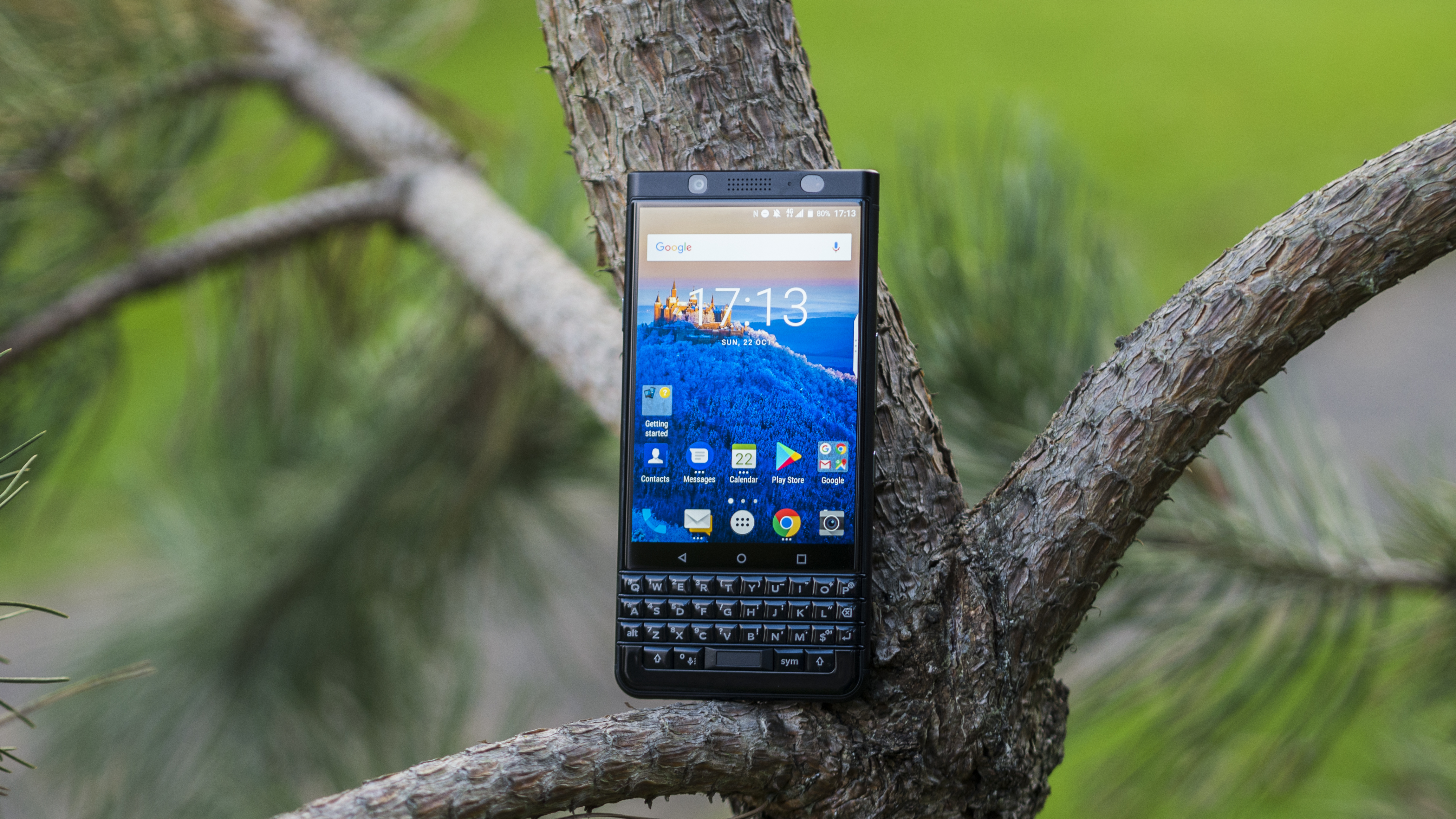
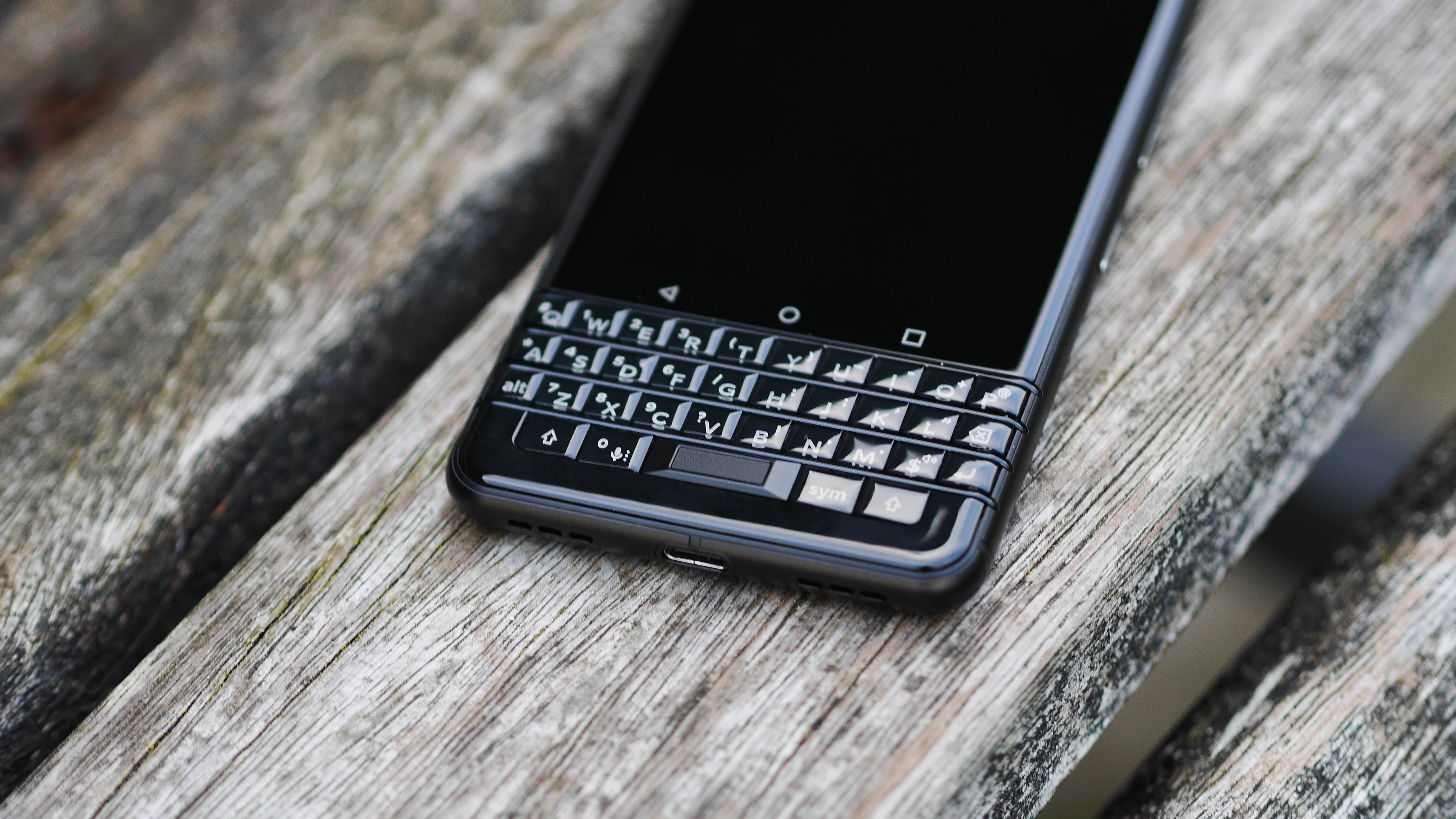
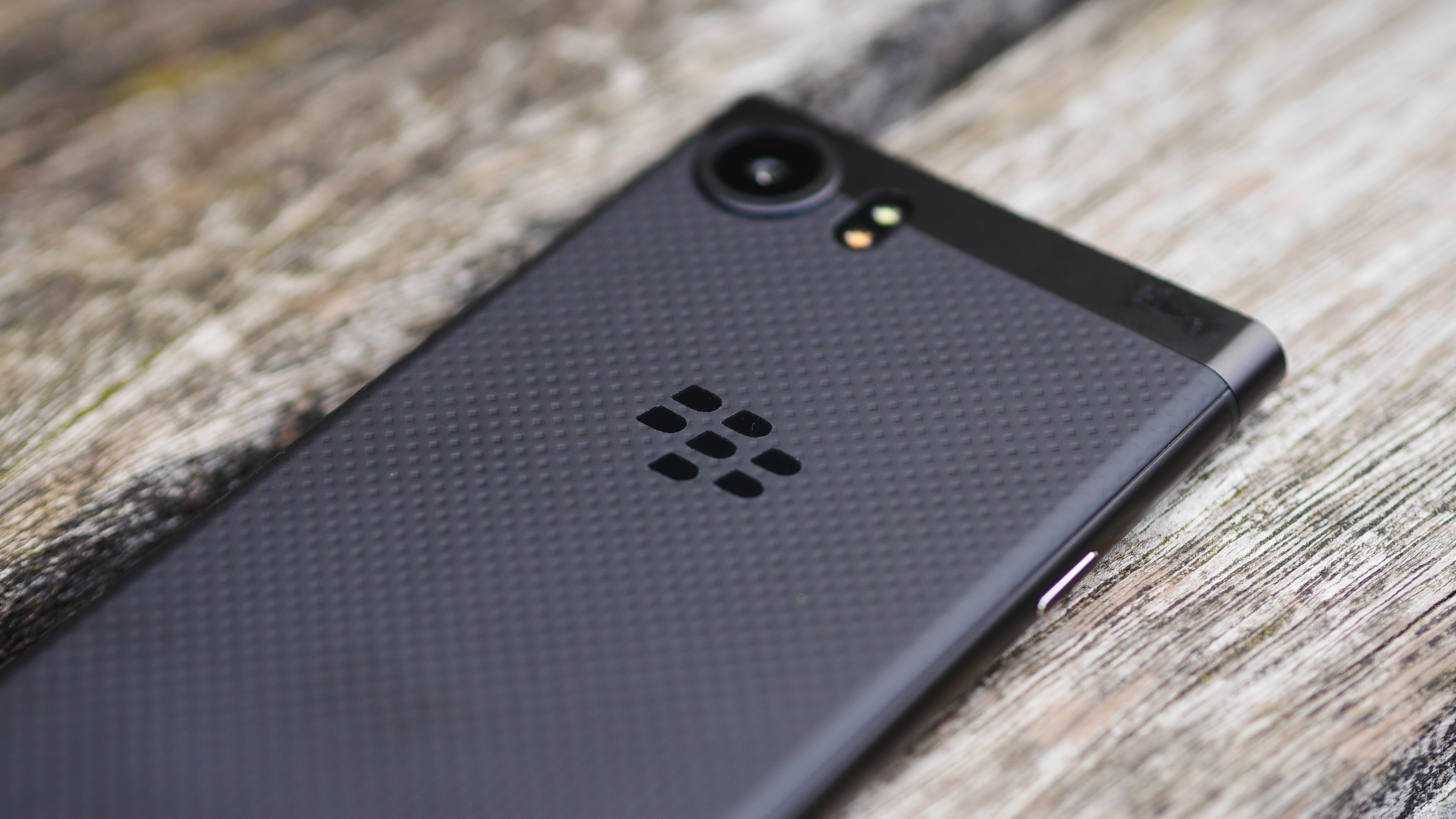
The device is razor focused on the tasks of typing and reading text, which doesn't often lend it well to the realities of owning a top-tier smartphone in 2017.
I would have been nice to see the stippled soft touch plastic rear make way for a sheet of matte aluminium, given the higher price point and more premium focus.

- 4.5-inch Full HD screen feels like a 5.5-inch screen due to bigger width and your thumbs staying put on the keyboard
- The bright display looks great, but its 3:2 aspect ratio forces 16:9 video to feel small by placing black bars at the top and bottom
- This is not a multimedia showstopper, it's a workhorse
The BlackBerry KeyOne display shares the front face of the phone with the keyboard, so it can’t compare to an trendy new all-screen Android phone. You just can't have everything in life.

Its 4.5-inch Full HD screen is misshapen, with one third of the phone real estate taken up by non-screen parts: keyboard, capacitive buttons and front camera.
It feels like a 5.5-inch display thanks to its familiar 3-inch width, and we wouldn’t want it much longer. Anything taller would make this already 180g phone feel top-heavy when holding the very bottom of the keyboard.
We end up with a screen that’s bright, colorful and gives you more usable space thanks to the the keyboard and trackpad-like scrolling. Sadly, not every app adjusts to a 1,620 x 1,080 resolution.
At this price, the inclusion of an LCD rather than a more punchy and colorful AMOLED screen feels a little like unnecessarily cost cutting, especially for the more premium Black Edition.
You’re going to run into problems with the 3:2 aspect ratio on a daily basis. All 16:9 video feels extra small with top and bottom black bars. Snapchats and Instagram Stories are also cut off, but for the type of user the KeyOne is targeting it's unlikely to matter too much,
The good news most productivity apps and interactive games adapt to the size. It’s just movies and fixed-length photo apps that give the BlackBerry KeyOne trouble.
You’ll find split-screen multitasking thanks to Android 7.1 Nougat, but it’s a bit cramped. There are a few sacrifices if you want a keyboard on a smartphone in the modern day.

- Runs Android 7.1.1 with helpful BlackBerry software and security
- Great, all-encompassing BlackBerry Hub combines almost all of your message services
- Gridview of recent apps makes switching apps easier even if the smaller screen makes true multitasking cramped
The KeyOne runs Android 7.1.1 Nougat with a BlackBerry twist. You have access to all of the Google Play Store apps, plus a few enterprise-focused programs and interface tweaks.
BlackBerry Hub is the highlight of the software. It combines your notifications, messages calls, and events into one streamlined location. You can easily sift through almost every account in your hectic work life: BlackBerry Messenger, texts, email, LinkedIn, Facebook, Instagram, Facebook Messenger, Slack, WhatsApp and Twitter.

BlackBerry Hub works because of deep customization. You customize alert rules to effortlessly toggle which accounts show up instead of doing it one-by-one. In our custom 'Vacation Mode,’ we turned off Twitter, Slack and work email alerts, but kept texts and Facebook Messenger enabled. We reserved it in our ‘Daily Work Day’ recipe for a productive day – all done without unticking individual account boxes each time.
BlackBerry Messenger is viable messaging app, but hardly the best. We liked the Time and Retract feature (Snapchat for grown ups), but were less impressed by its sponsored ads and lack of a desktop companion app. This is an enterprise phone, right?
Swiping in from the right brings up a productivity tab, where unread emails, upcoming events, a to do list and more are displayed. This is active by default on every screen, but can be disabled if you wish.
DTEK is the security app that keeps your phone safe. It constantly monitors your device’s security status level and gives you a rating. You can review permissions of every app to understand the information they can access, and keep track of vulnerabilities. DTEK is the one BlackBerry app you never want to really have to use.
BlackBerry KeyOne's has a stock Android vibe, but we found the tweaked recent menu helpful. It opens up your most recent apps in an assorted gridview that's easier to browse through than with the fanned-out look of every other phone.
It tries to pull off a 3D touch shortcuts interface within its homescreen apps, but it’s not fleshed out. Swiping up on apps sometimes get you a mini window of the app’s most important information (helpful), but too many apps don’t support this yet; it’s just option to add widgets to the homescreen (not helpful).
The BlackBerry KeyOne can feel a little ‘untidy’ at times, with dual email apps, dual calendar apps and more all cluttering up the app drawer.

- Qualcomm Snapdragon 625 octa-core is a mid-range chipset
- It's fast enough for multitasking, but isn't mean for heavy gaming
- 32GB of internal storage and single-SIM are anti-business
- KeyOne Black Edition bumps storage to 64GB and RAM to 4GB
The BlackBerry KeyOne is priced less than a Samsung or LG flagship phone for good reason: it doesn’t have flagship level specs and performance.
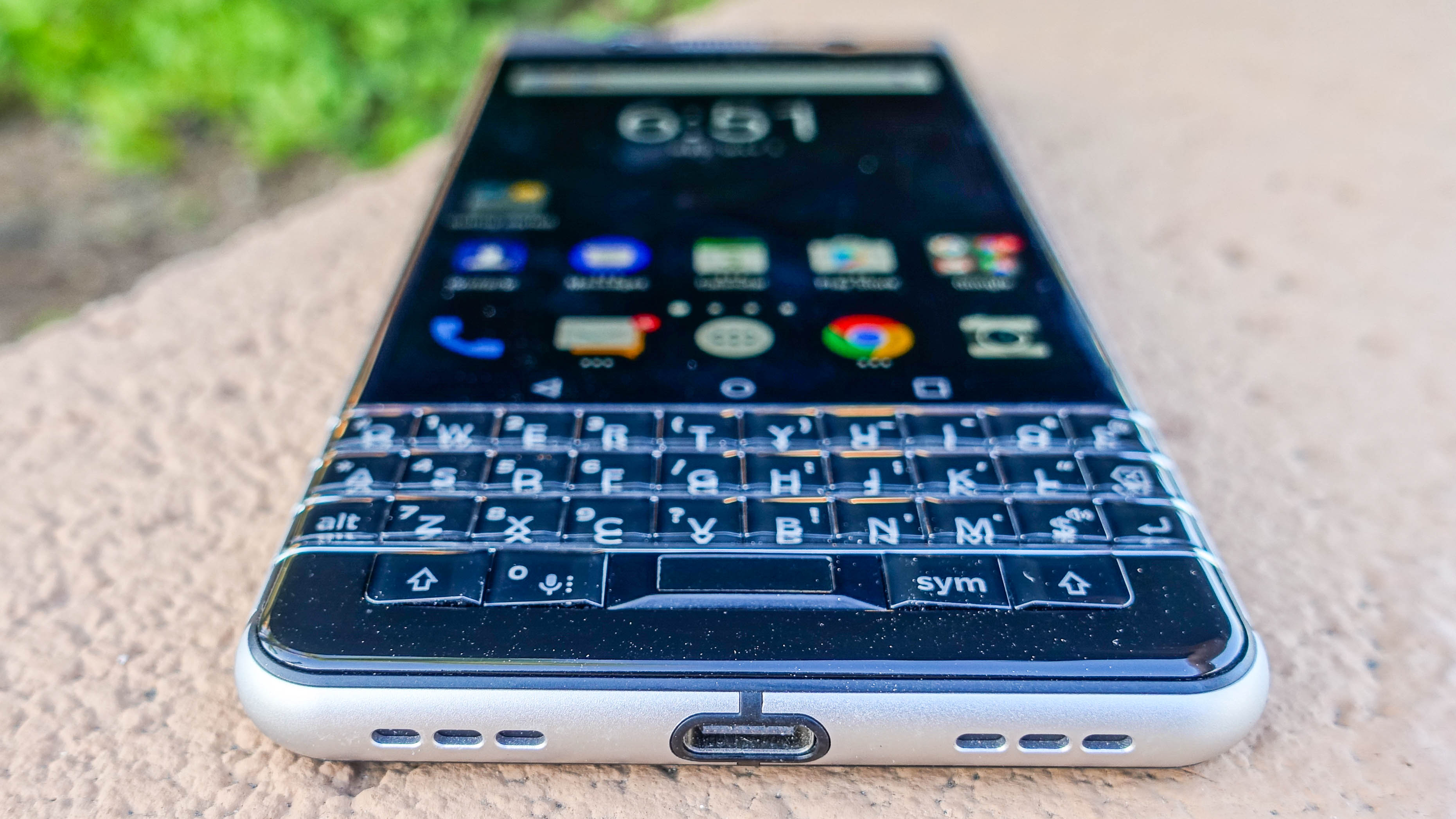
Its Qualcomm Snapdragon 625 octa-core chipset is fast enough for most day-to-day work tasks, and its 64-bit capabilities ensure multitasking is fairly smooth.
Occasional slowdown happened when we were playing games; its 3GB of RAM and Adreno 506 graphics chip put the KeyOne a step behind other phones. Don’t expect the smoothest frame rates or performance.
It also starts with 32GB of internal storage, not 64GB, and while it has a microSD card slot, it doesn’t turn into a second nano SIM slot for dual-SIM use.
Its occasional slowdown and single-SIM support shouldn’t turn you off if you love the keyboard, but it is an odd pairing: mid-range specs with high-end phone design and software features.
The story does change a little with the BlackBerry KeyOne Black Edition. With 64GB of internal storage, there is a lot more room to spread out, most people will find it to be enough.
With an extra 1GB of RAM there is a small, but palpable difference in performance, with things running a little more smoothly.
This doesn’t make the KeyOne a gaming powerhouse, but it certainly makes checking email a little quicker.

- 12MP camera does a better than expected job, even if it's not to Google Pixel and Samsung Galaxy S8 standards
- 8MP front-facing camera is good, but suffers greatly in low light conditions
- BlackBerry's cumbersome camera app is the biggest issue here
BlackBerry KeyOne has a main 12MP camera that captures large 1.55um and we found it to do a superb job in daylight and a decent job in low light, too. A lot of this is thanks to multi-frame low light capabilities that try to suss out the best photo from multiple shots.

It has Phase Detect Auto Focus for faster focusing, and electronic image stabilization (EIS) for steady photos and video for reducing camera shake. We found EIS video to be smooth, but not as gimbal-steady as the optical image stabilization (OIS) of the Samsung Galaxy S8 and Galaxy S8 Plus.
You’re also going to have a better chance at a good photo in low light with the Google Pixel due to both backend and front-end software. It shares the Sony IMX378 camera sensor, but this only does so much for the BlackBerry KeyOne.
Turning on HDR helps, but we found photos to generally be a little darker than we would have liked without editing them first to increase exposure.

BlackBerry KeyOne front-facing camera
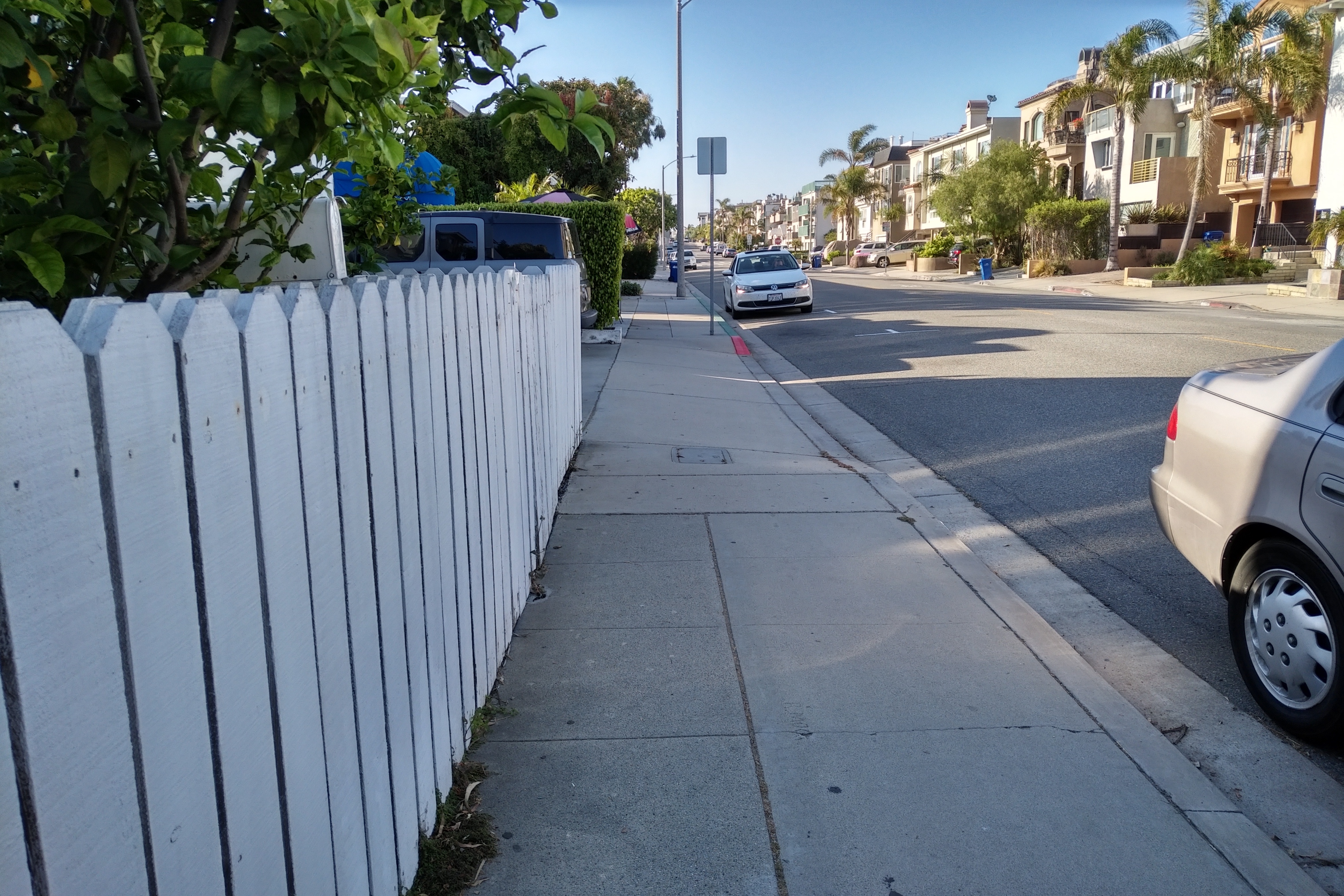
BlackBerry KeyOne main camera
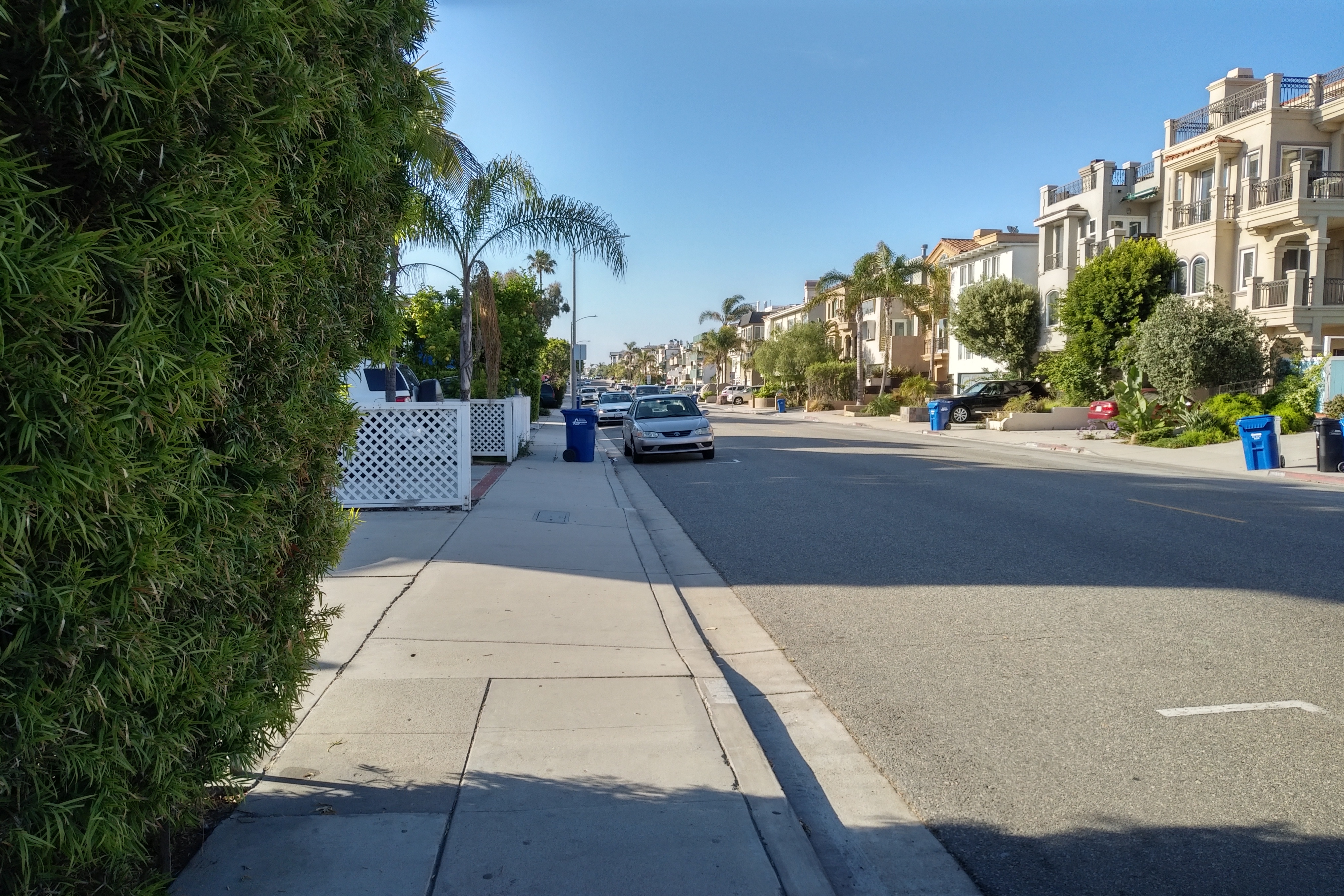
BlackBerry KeyOne main camera

BlackBerry KeyOne main camera (low-light test)
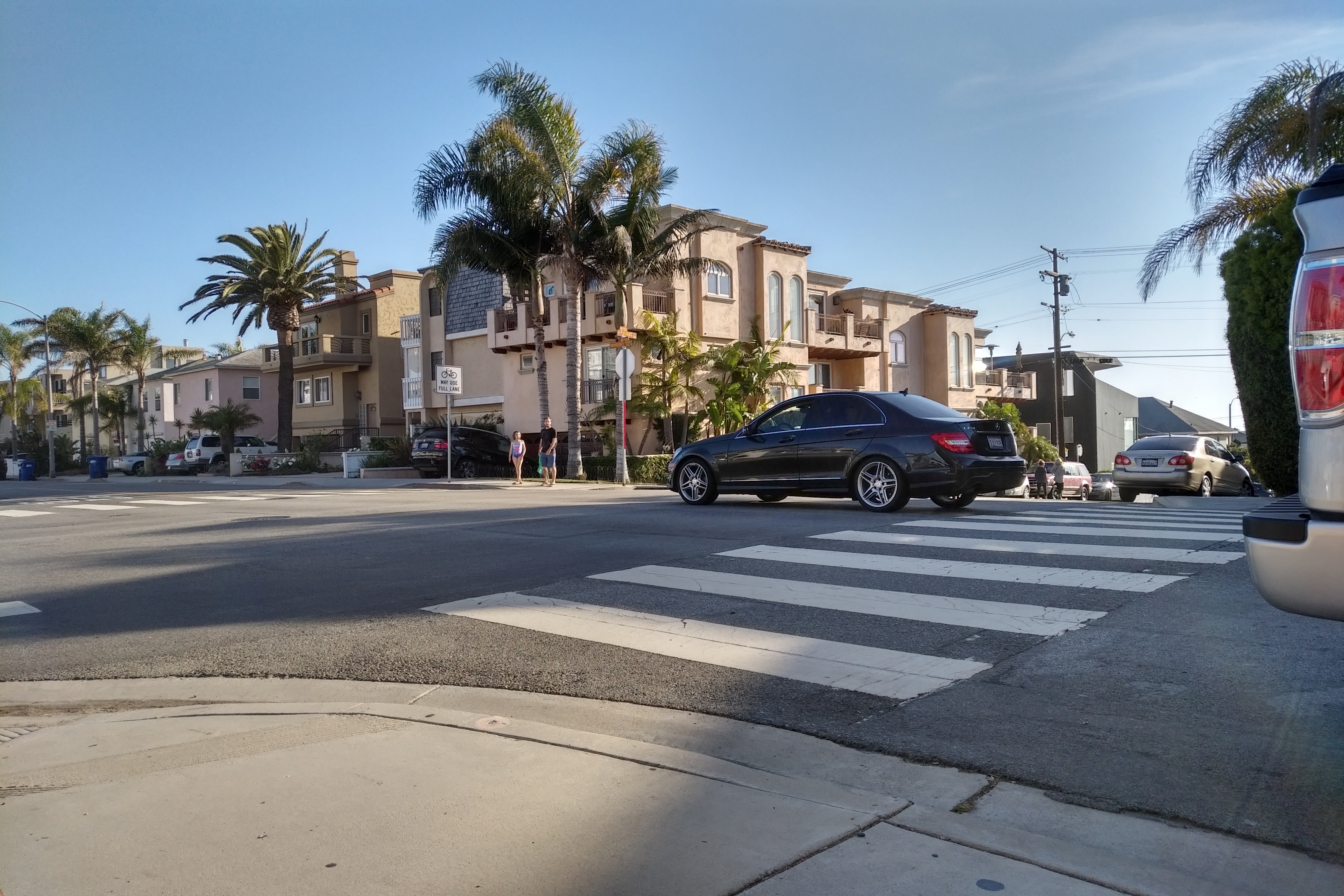
BlackBerry KeyOne main camera (motion test)

Main camBlackBerry KeyOne main camera (food test)
BlackBerry's camera app is unfixable nuisance. It has very few modes (Photo, Pano, Video and Slow-Mo) and they’re all hidden in a mode menu. That means you have to dig into a menu to switch between photos and videos instead of having available on the screen at all times. It’s a cumbersome, unintuitive mess.
The KeyOne can shoot 4K video at 30 frames per second and 1080p at 60fps. Oddly, switching between all of its various video resolutions and frame rates is right at the top of the camera app. That’s at least easy to access.
The front-facing camera takes 8MP shots with similar results as the main rear camera. Great in daylight, but its f/2.2 lens and 1.125um pixel size can’t stand up to low light.
Moving subjects should still be advised to stay absolutely motionless in less than stellar lighting conditions . "Next person to even say ‘Cheese’ is out of the group selfie."

- 3,505mAh battery last between 26 and 36 hours in our testing
- Superb battery-saving background tricks whenever the phone is idle
- Loses only 2% of battery life overnight and recharges very quickly
BlackBerry KeyOne is a smartphone built for today’s workaholics right down to the battery life. It lasted us almost a day and a half in our battery life tests.
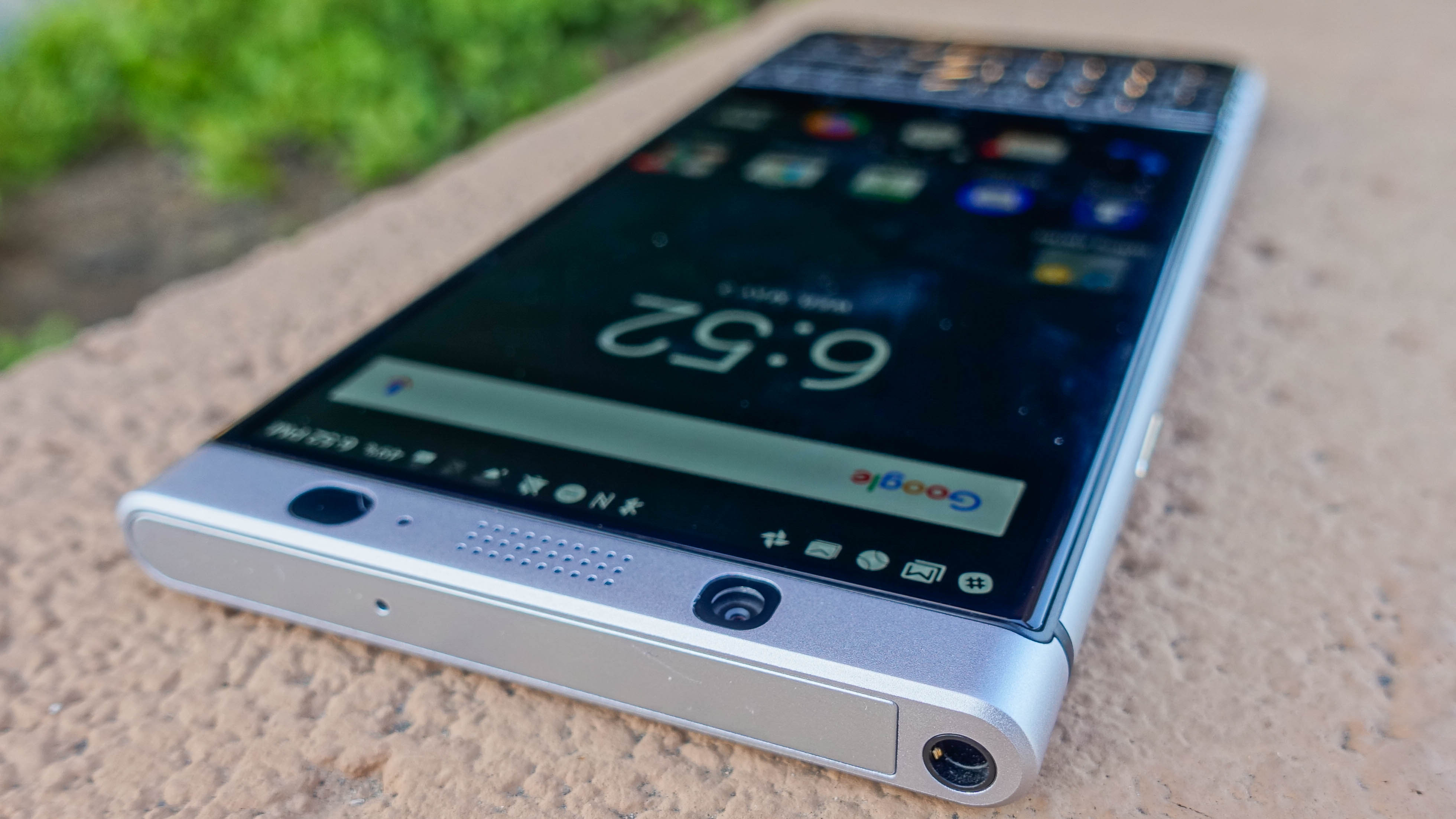
Its 3,505mAh battery capacity is rated for 26 hours, but we found lasted longer by draining only 2% when we left it idle at night (testing time: exactly eight hours). So 26 hours turned out to be closer to 36 hours for us. There's no need to bring a power pack on the go when starting a day of constant emailing.
Say what you will about its slower Snapdragon 625 chipset; it's at least battery efficient. Watching an HD video for 90 minutes at full brightness only took the battery down to 89%, losing a very respectable 11%.
Here’s something else to like: It can juice back up to 50% in just 36 minutes and takes 1 hour and 52 minutes total to reach 100%. Helping things out is ‘Boost Mode,’ which suspends some performance for faster charging gains.
BlackBerry KeyOne doesn’t have an always-on screen for anything else, it always lets you know the charging percentage and slowly growing a red and then green bar along the side of the screen whenever it’s plugged in.


Enterprise phone users
BlackBerry KeyOne is the smartphone for anyone who has ever said ‘I miss my old BlackBerry.’ It reinvents the tactical QWERTY keyboard phone for the modern Android era. It's for everyone who has felt exiled to on-screen keyboards over last half decade.

Businesses buying in bulk
Buying in bulk for employees? You'll appreciate the front-and-center DTEK security app, solid battery life and BlackBerry Hub. There’s no excuse for workers to miss your messages now. It's also cheaper than other top phones.


Entertainment seekers
This is not fit for multimedia due to its misshapen 3:2 screen that puts black bars on the top and bottom of 16:9 video and single speaker. This is far from an all-screen phone. It's all for work and not for play.

Selfie takers
You won't get the best selfies from the front-facing camera, even though the rear camera is pretty good. Lowlight causes too much blurring and switching between the two camera in the main app is a confusing mess.
